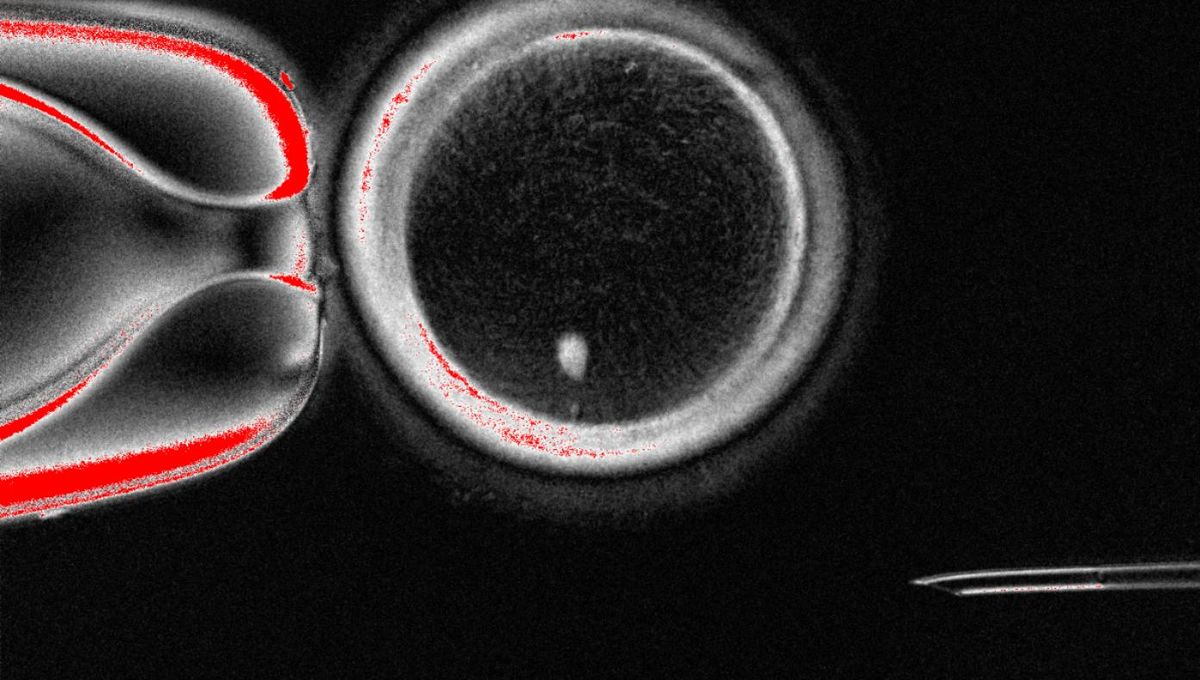
Human skin cells have been used to produce fertilizable eggs in a proof-of-concept study that heralds a potential new approach to infertility treatment. While much more research is needed to know how truly safe and effective this could be, it opens up the possibility that we could one day create new egg cells for women containing their own DNA.
Infertility impacts an estimated one in six adults globally, and lots of scientists are working to unpack the multitude of causes and develop new approaches to treatment. A recent world-first estimate found that over 13 million babies have been born through assisted reproduction.
As well as improvements to existing technologies like in-vitro fertilization (IVF), recent years have seen advances like mitochondrial transfer. This allows parents to avoid passing on inherited mitochondrial diseases to their children by taking mitochondrial DNA from a third person.
A common cause of infertility is insufficient or degraded egg cells. In such cases, conventional IVF may not be an option, but one exciting alternative that’s recently been explored is somatic cell nuclear transfer. This involves swapping the nucleus of a donor egg cell with the nucleus from another cell – such as a skin cell – producing a functional egg with genetic material from the parent-to-be.
One big hurdle in this process is that most of the cells in our bodies contain two sets of chromosomes, a total of 46, whereas gametes (eggs and sperm) contain only one. Removing one set of chromosomes safely before successful somatic cell nuclear transfer has previously been demonstrated in mice, but never in humans – until now.
In the new study, led by researchers at Oregon Health & Science University, the nuclei from skin cells were inserted into donor eggs that had had their nuclei removed. The team then induced the egg cells to undergo a process they’ve called “mitomeiosis”. Although similar to mitosis – the process of natural cell division that results in two identical copies of a parent cell – mitomeiosis has key differences that result in one set of chromosomes being discarded, so the resultant daughter cell is haploid (containing only 23 chromosomes).
In total, the scientists were able to generate 82 functional egg cells from this process, which they then fertilized with sperm in the lab. Of these, around 9 percent developed into blastocysts, an early stage of embryonic development, after six days. Culturing was not continued after this point as this is when transfer into the uterus would happen during typical IVF.
“This insightful piece of research demonstrates that the chromosomes of a differentiated adult cell, known as a somatic cell, can be persuaded to undergo a specific kind of nuclear division that would normally be seen only in eggs or in sperm,” commented Professor Roger Sturmey of the University of Hull, who was not on the research team, to the Science Media Centre.
“This is important, because it opens up the possibility of creating functional new egg cells, containing genetic material that can – in principle – be taken from cells from anywhere in the body.”
However, as Sturmey and the authors themselves point out, the success rate was fairly low. They accept that “extensive future investigations” are needed to optimize the method if it is ever to be used in the clinic.
Still, the study demonstrates that somatic cell nuclear transfer in humans is more than just a theoretical possibility.
Professor Richard Anderson, Deputy Director of the MRC Centre for Reproductive Health at the University of Edinburgh, also praised the work in a comment to Science Media Centre: “There will be very important safety concerns but this study is a step towards helping many women have their own genetic children.”
The study is published in Nature Communications.
Source Link: For The First Time In Humans, Skin Cells Have Been Used To Create Fertilizable Eggs